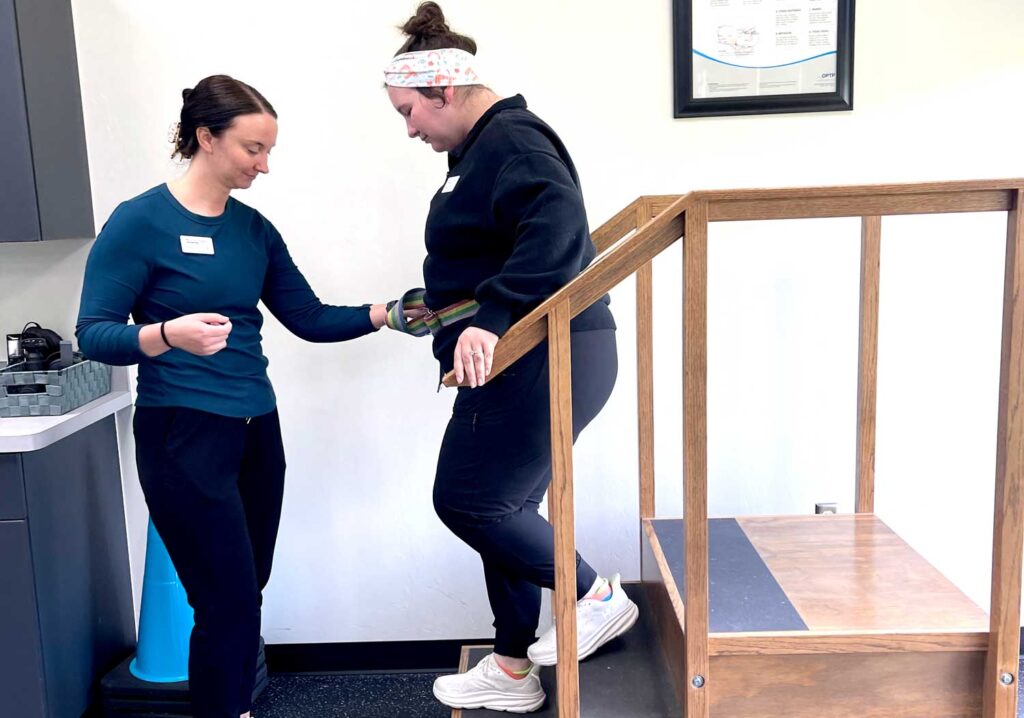Why is exercise still important if you have osteoporosis or osteopenia?
Exercise is important and I would argue vital for overall physical wellness and well-being for any human being, and those with osteoporosis or osteopenia are no exception. In people with diagnosed osteoporosis or osteopenia, exercise is additionally important to prevent overall debility and physical deconditioning, as being deconditioned can increase the risk for falls, which in the case of osteoporosis would indicate a higher risk for having a fracture due to the bony weakness associated with the process of osteoporosis. In osteoporosis, it has been demonstrated that low levels of exercise or physical activity can contribute to an increased rate of bone loss, as noted by the National Institute of Arthritis and Musculoskeletal and Skin Diseases. Therefore, exercise can help decrease the rate of bone loss.
What are the goals of exercise for people who have osteoporosis?
The primary goals of exercise for people who have osteoporosis should include decreasing the rate of bone loss to preserve bone strength and to proactively prevent falls. Both of these goals work to reduce the risk of fractures, or broken bones.
How specifically do weight bearing exercises help people with osteoporosis?
Weight-bearing exercise, or exercise where your body works against gravity, helps people with osteoporosis specifically because weight-bearing exercise stimulates bone forming cells to help strengthen bones and increase bone density. This bone forming process can be decreased in those diagnosed with osteoporosis, so any forms of exercise that help to stimulate the action of bone forming cells would be helpful in reducing overall risk of fractures. Great examples of weight bearing exercises include walking, stair climbing, Tai Chi, yoga, and low impact aerobics.
How specifically do balance exercises help people with osteoporosis?
Improving balance is important to prevent the risk of falling. Balance exercises serve to improve stability and are often also performed in closed chain or weight bearing positions, which helps with osteoporosis as discussed above. Balance exercises include a wide variety of exercises, but often include introducing your body to stimuli that challenge your balance to force you to use muscles together in a way to prevent you from falling. This can include balancing on unlevel or varying surfaces, walking with obstacles and dual tasking among many others. The overall goal is to prevent falls. Falling is often a cause of fractures, and this risk is increased in those with osteoporosis.
What exercise moves should someone with osteoporosis avoid?
This is usually something that can be specifically discussed with your medical provider, but people with osteoporosis do need to be mindful of very high-impact activities such as jumping, running, or CrossFit type activities as well as being careful of quick/jerking movements within these high impact activities. People with osteoporosis also need to be mindful of forceful or quick forward bending movements or twisting of the spine. The speed and force of this movement vs the movement itself can be a risk for fracture in the spine. Some activities that might cause you to bend or twist forcefully include sit-ups, tennis, and bowling. What is important to remember is that being fit and strong and performing exercises with slow and controlled movements can still allow you to do a great number of things and exercises, and is another reason why exercise is so important.
How can a person with osteoporosis make sure they exercise safely?
As mentioned above, choosing exercises with slow and controlled movements can help improve the safety with exercise. This allows you to improve the strength and stability of your body while exercising safely. As with any exercise regimen, it is important to tailor the program to your ability and level of comfort and you should also be mindful of pain. Working with a physical therapist would be a good option and they would be able to assist you in developing a strength and exercise program tailored to your needs to help you meet your goals.
Sources:

